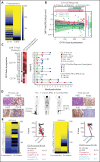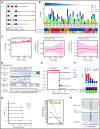CD19 target evasion as a mechanism of relapse in large B-cell lymphoma treated with axicabtagene ciloleucel
- PMID: 34041526
- PMCID: PMC8462361
- DOI: 10.1182/blood.2021010930
CD19 target evasion as a mechanism of relapse in large B-cell lymphoma treated with axicabtagene ciloleucel
Figures


References
-
- Shah NN, Johnson BD, Schneider D, et al. . Bispecific anti-CD20, anti-CD19 CAR T cells for relapsed B cell malignancies: a phase 1 dose escalation and expansion trial. Nat Med. 2020;26(10):1569-1575. - PubMed
Publication types
MeSH terms
Substances
LinkOut - more resources
Full Text Sources
Other Literature Sources

